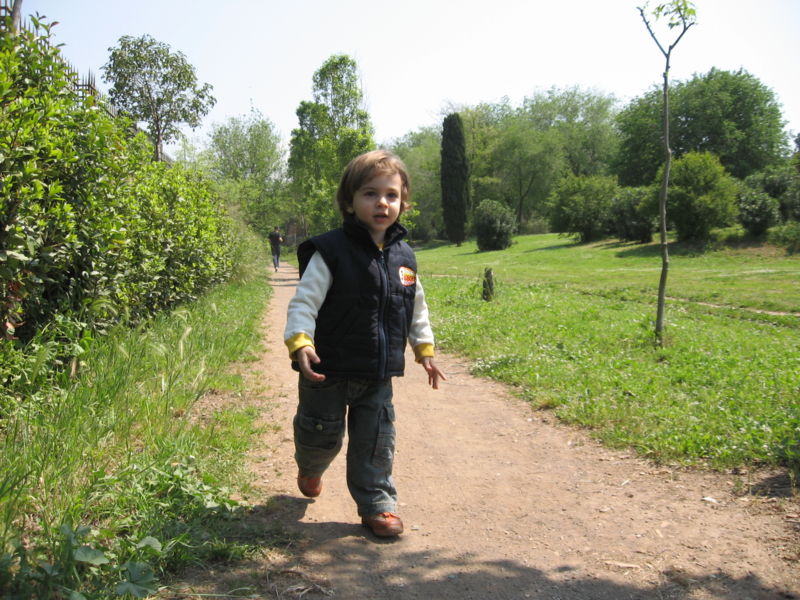Toddler

Toddler is a common term for a young child who is learning to walk or "toddle",[1] generally considered to be the second stage of development after infancy and before childhood occurring predominantly during the ages of 12 to 36 months old.[2] During this period, the child learns a great deal about social roles and develops motor skills; to toddle is to walk unsteadily. The term cruising is used for toddlers who cannot toddle but must hold onto something while walking.
The toddler developmental timeline shows what an average toddler can do at what age. Times vary greatly from child to child. It is common for some toddlers to master certain skills (such as walking) well before other skills (like talking). Even close siblings can vary greatly in the time taken to achieve each key milestone.
This age is sometimes referred to as 'the terrible twos', because of the temper tantrums for which they are famous. This stage can begin as early as nine months old depending on the child and environment. The toddler is discovering that they are a separate being from their mother or caregiver and are testing their boundaries in learning the way the world around them works. This time between the ages of two and five when they are reaching for independence repeats itself during adolescence. Thus it is very important for the caregiver to be consistent with boundaries and discipline for the child’s safety and the caregiver's sanity through puberty.
Most children are toilet trained while they are toddlers. In most Western countries, toilet training starts as early as 17 months for some while others are not ready to begin toilet training until they are three.
When toddlers can walk they are still often transported in a buggy, or stroller when they are tired, or to increase speed.
Around 18 months, the toddler's vocabulary will greatly increase, and he or she may learn as many as 7-9 new words a day.
Overview table
| Age | Physical | Mental | Emotional |
|---|---|---|---|
| 12–15 Months |
|
|
|
| 15–18 Months |
|
| |
| 18–24 Months |
|
|
|
| 24–36 Months |
|
|
|
References
Template:Start box Template:Succession box
de:Kleinkind ko:유아 id:Balita it:Bambino piccolo nl:Peuter scn:Nutricu simple:Toddler sv:Koltålder